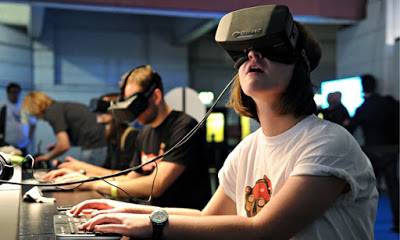Gamers are already mostly familiar with the possibilities of virtual reality and are eagerly awaiting the shipment of multiple VR titles and headsets. This gives them a leg up on medical professionals, who might dismiss it as merely a frivolous gaming tool. The truth is that this new gaming development could have wide-ranging applications in healthcare particularly in the treatment of those suffering from autism or disability.
The latest incarnations of virtual reality are a far cry from the clunky, headache-inducing units that achieved notoriety in the ’90s. The models that are expected to hit the marketplace very soon use advanced graphics capabilities and motion sensing equipment to deliver experiences that are realistic, attractive and appealing. The user usually has to put on a special headset that projects high-res images in front of the eyes. In order to control the action and change the view, he or she uses a combination of eye and head movements and hand-held devices.
purchased the Oculus Rift, which is perhaps the frontrunner in the VR landscape, in 2014. It will work with regular computers as a plug-in peripheral. Sony’s Project Morpheus, on the other hand, is designed to act as a controller for the PlayStation 4 console. Microsoft is serious about making its mark in this newly emerging industry and has even created a special version of Windows to support its HoloLens. The HoloLens differs from most competing products by mixing holographic elements with the real world instead of just featuring a made-up world.
A VR system by MindMaze in Switzerland shows promise in treating those with motor ability impairments. The patient’s head is wired up with electrodes, and then he or she tries to manipulate a virtual arm or leg. This causes the brain to more effectively use new neurons or repair damaged ones to compensate for the injury. The CEO of MindMaze has stated that motor function can improve by up to 35 percent after three weeks of using the system.
Autistic people, who often have difficulty interacting in the real world, may find respite in an imaginary setting. A study in North Carolina found that children with autism were willing and able to enter a virtual world, observe their surroundings and move around. Another program at the University of Texas, Dallas explored the use of VR to enable autistic people to work on their social skills by partaking in virtual social interactions. The results showed that those who participated in the study had heightened brain activity in the parts of the brain responsible for social perception.
Virtual reality can extend the capabilities of people who are disabled or suffer from debilitating illnesses. Through the use of a VR system developed by FOVE, even people who have lost the use of their hands can play the piano by using eye movements and blinks to select the notes to play. Another simulation, all the way back in 1994, allowed a boy with cerebral palsy to take a virtual stroll through a grassy field.
Access to nearly infinite fictional, virtual worlds opens up space for treatments that would otherwise be difficult or impossible. As the technology continues to improve and prices get lower, we’ll see a growing use of VR systems to help people with a broad range of conditions, including many disabilities. This will be only a part of a broader move by society as a whole to embrace these exciting advancements.
Image Sources: The Guardian, Techradar, Center for Brain Health


